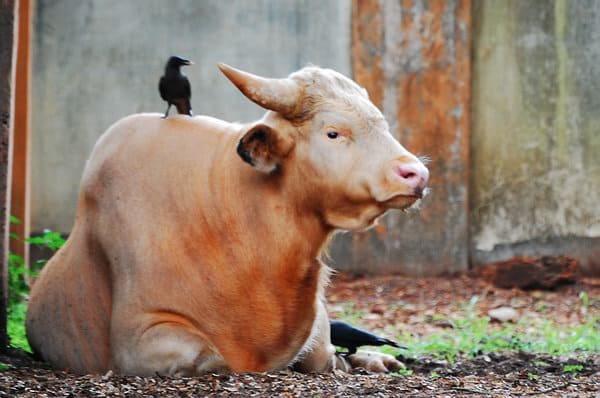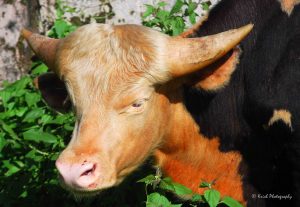
Genome Sequencing of Mithun prove it to be a descendant of a cross between male Wild Gaur and Cow
Cheng Mei and Others- Extracted from Science Reports published in January 2016
Mithun, also known as Gayal, is a unique semi-wild endangered bovine (relative of cow) species that is found in the hilly areas of China, India, Bangladesh, Myanmar and Bhutan. Mithun carry 58 chromosomes, compared to the 60 carried by cows. The origin of Mithun is still unclear; although some claim it to be an independently evolved species, others believe that it as a descendent of a cross between wild gaur and domestic cattle. Earlier studies have shown that Mithun and cows can interbreed, and that the resultant female progeny are fertile; although the males are infertile. Since artificial insemination is not a common breeding practice for mithun, its phenotypic characteristics have not changed over time. These animals have a bulging forehead ridge above the nose, a pair of wide and short ears and feet with white stockings.

They can survive on any variety of plants, ranging from tree and bamboo leaves to grasses and reeds, and can adapt easily to harsh mountain conditions. Unfortunately, the population of mithun is dwindling fast, and it has been classified as an endangered species by the the International Union for Conservation of Nature and Natural Resources. In order to understand its genetic background, a whole genome sequencing of mithun was undertaken recently by Chinese researchers. The study identified numerous genetic variations, out of which 62.24% of the total single nucleotide polymorphisms (SNPs) were novel. Further studies were conducted on 16,901 breed-specific nonsynonymous SNPs that were suspected to be associated with traits of interest. The genomic analysis proved that mithun was a hybrid descendant of a cross between the male wild gaur and female domestic cattle.
